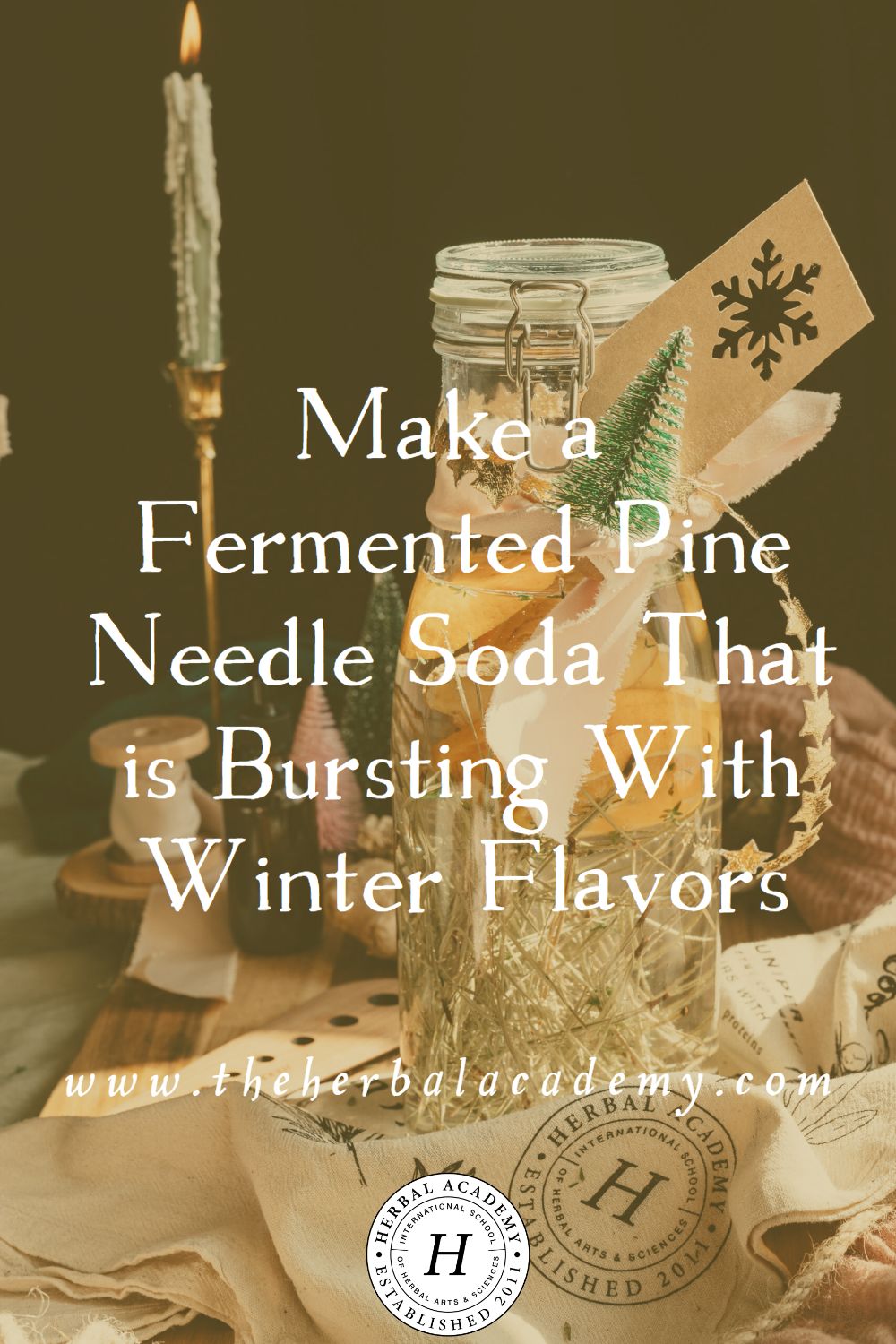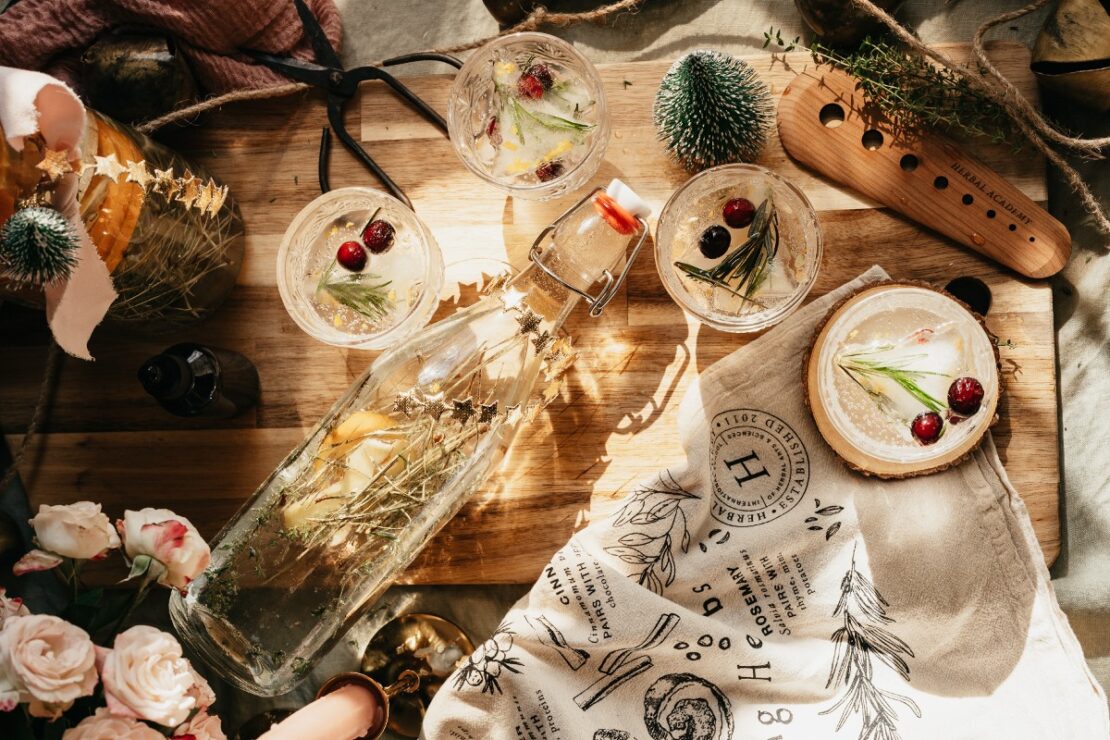
Make a Fermented Pine Needle Soda That is Bursting With Winter Flavors
Not just any soda! This pine needle soda recipe makes a delightful drink that is bursting with winter flavors: pine, ginger, and citrus, as well as aromatic herbs, which really shine during this cold season.
Making your own pine needle soda at home can seem a little overwhelming or advanced at first—maybe you’ve heard stories of over-fermented drinks turning into vinegar or bottles exploding under too much pressure. However, with the right care, creating herbal ferments like this one is a fun, creative, and delicious way of working with herbs. Homemade sodas are full of probiotics and, unlike store-bought sodas, have no artificial additives. The result is a gut-loving, herb-powered drink that you may find yourself coming back to over and over, adapting it throughout the seasons. Have we piqued your interest?
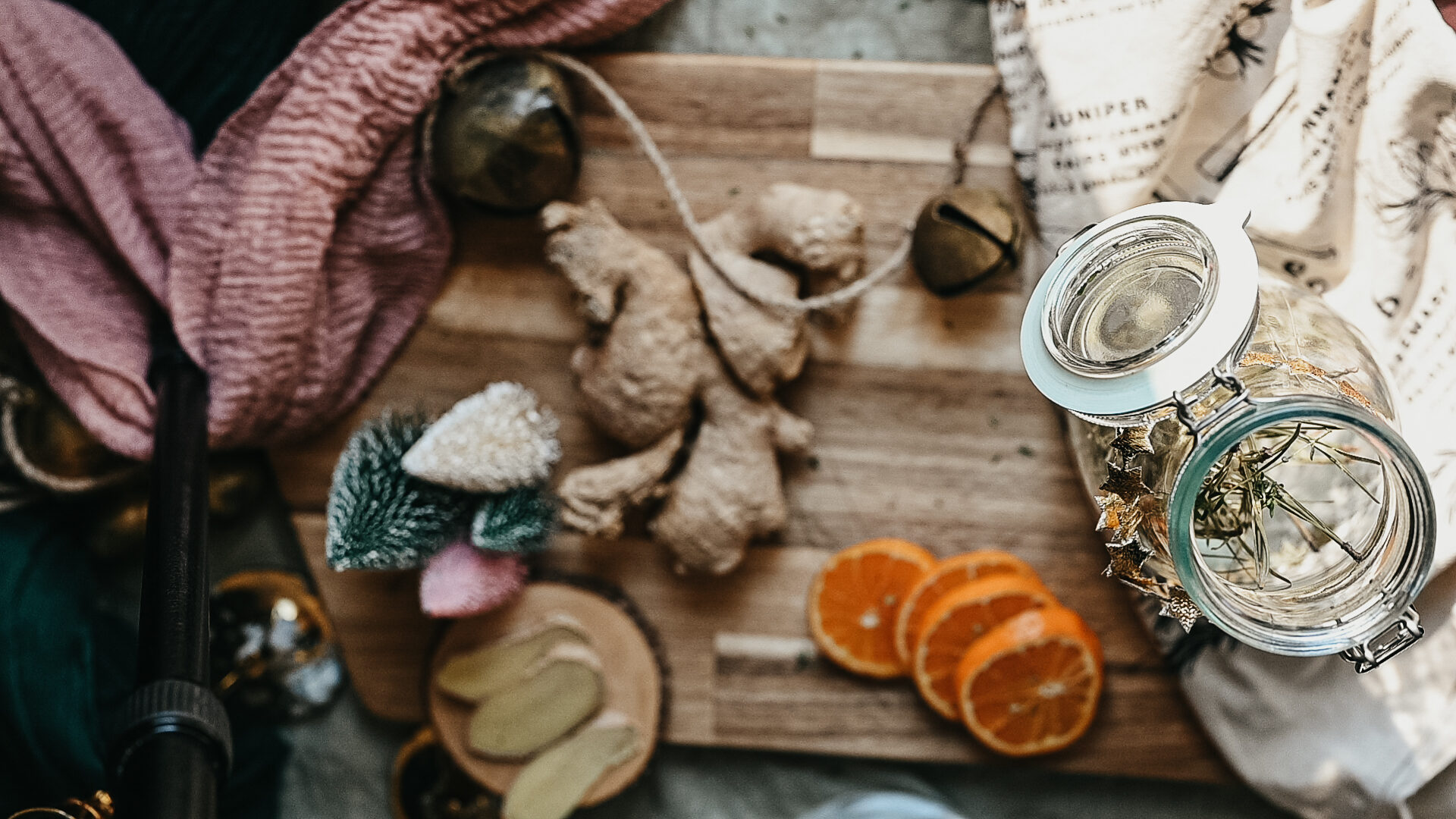
This pine needle soda recipe uses whey protein to help give the final soda a high carbonation level, but this ingredient is optional, so you can skip it if desired. Nature will provide the Lactobacillus needed for fermentation all on its own without the whey; however, whey can be used as a starter because of the positively bubbly and fizzy results it yields.
If you decide to use whey, you can make your own whey at home by extracting it from plain yogurt! Whey is the cloudy, watery liquid left behind after straining thick yogurts and cheeses. To extract your own whey from yogurt, simply spoon the plain yogurt into a coffee filter placed over a bowl and place it in the fridge for 1-4 hours. Now, you have Greek-style yogurt in the filter and a starter for your soda in the bowl. Talk about a win-win!
Now that you have the whey ready (if using), grab your boots and a foraging basket and head out for a little wintertime foraging. The main herb in this recipe is pine (Pinus spp.) needles, an easily foraged herb that grows in close proximity to many of us, and which will lend a deep, tangy flavor to your drink.
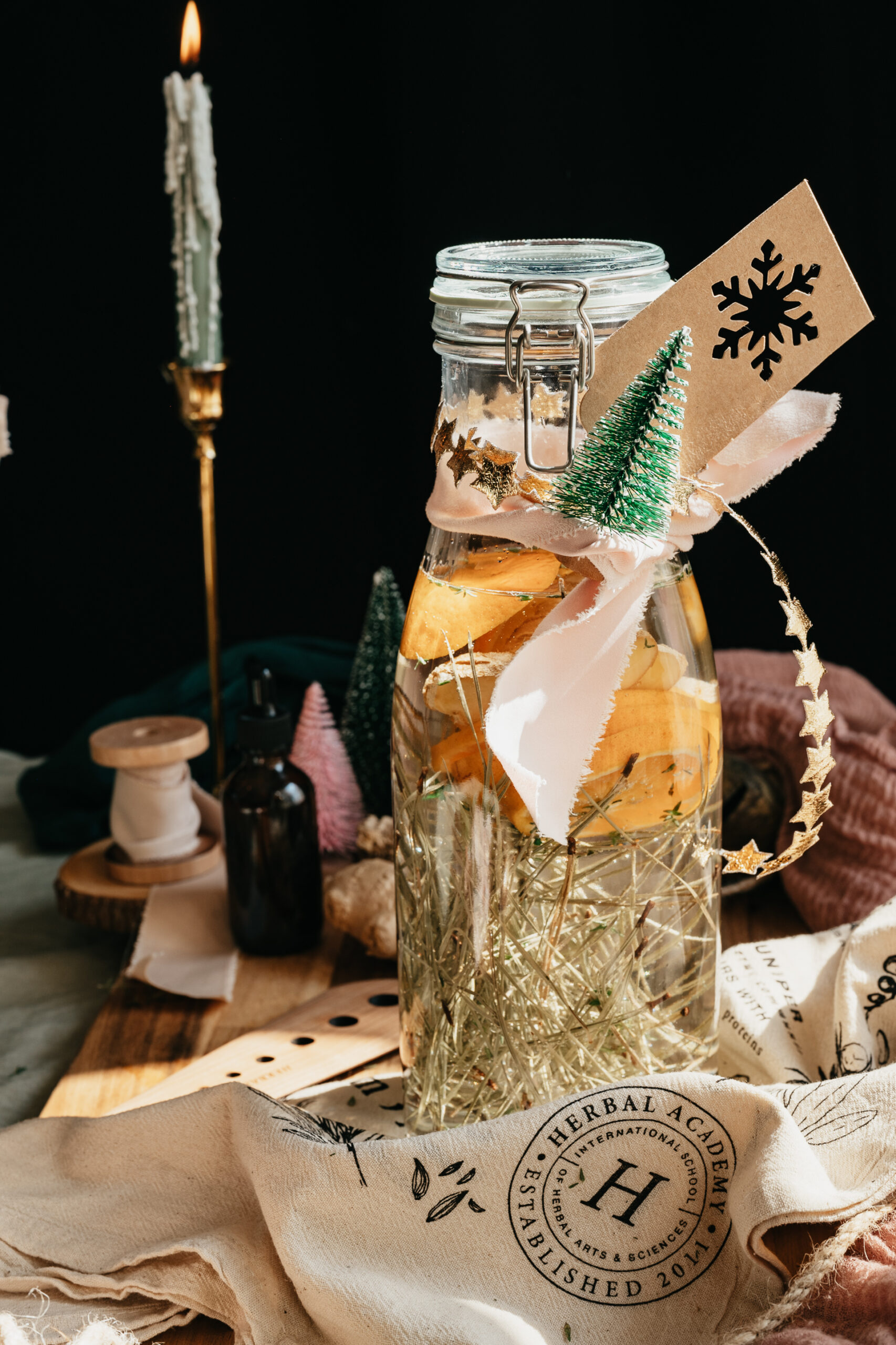
Pine (Pinus spp.)
Many herbalists focus on the use of white pine (Pinus strobus), which is abundant throughout the eastern United States and is easily identified by its unique five-needle clusters. However, after further research, don’t hesitate to work with the species of pine found in your bioregion. Pines are distinguished from other conifers by their needles: pine needles are bundled in clusters, most commonly 2-5 needles per cluster. Many pines have long needles, but there are some varieties with short needles too. Most pine trees are safe to use, but pregnant individuals should choose caution with ponderosa pine (Pinus ponderosa) due to the potential concern of stimulating uterine contractions based on its observed effects in livestock browsing on the pine needles.
Pine has a warming and drying energy and promotes circulation, while the needles are rich in immune-supporting vitamin C. Combined with the antimicrobial effects of its volatile oils, these qualities make pine an excellent winter ally!
Find more ideas for using pine needles in 8 Terrific Ways to Use Pine Needles Right Now.
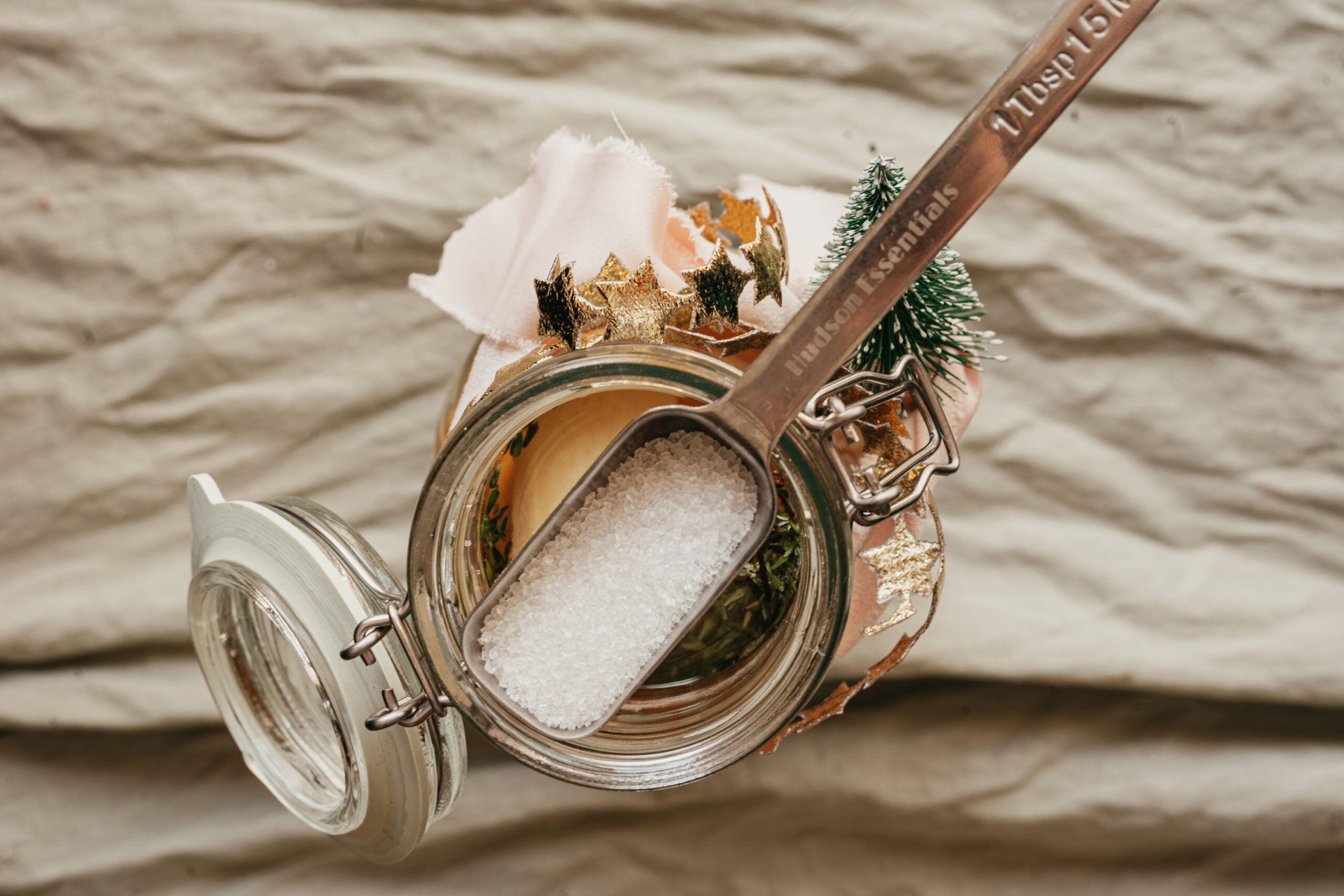
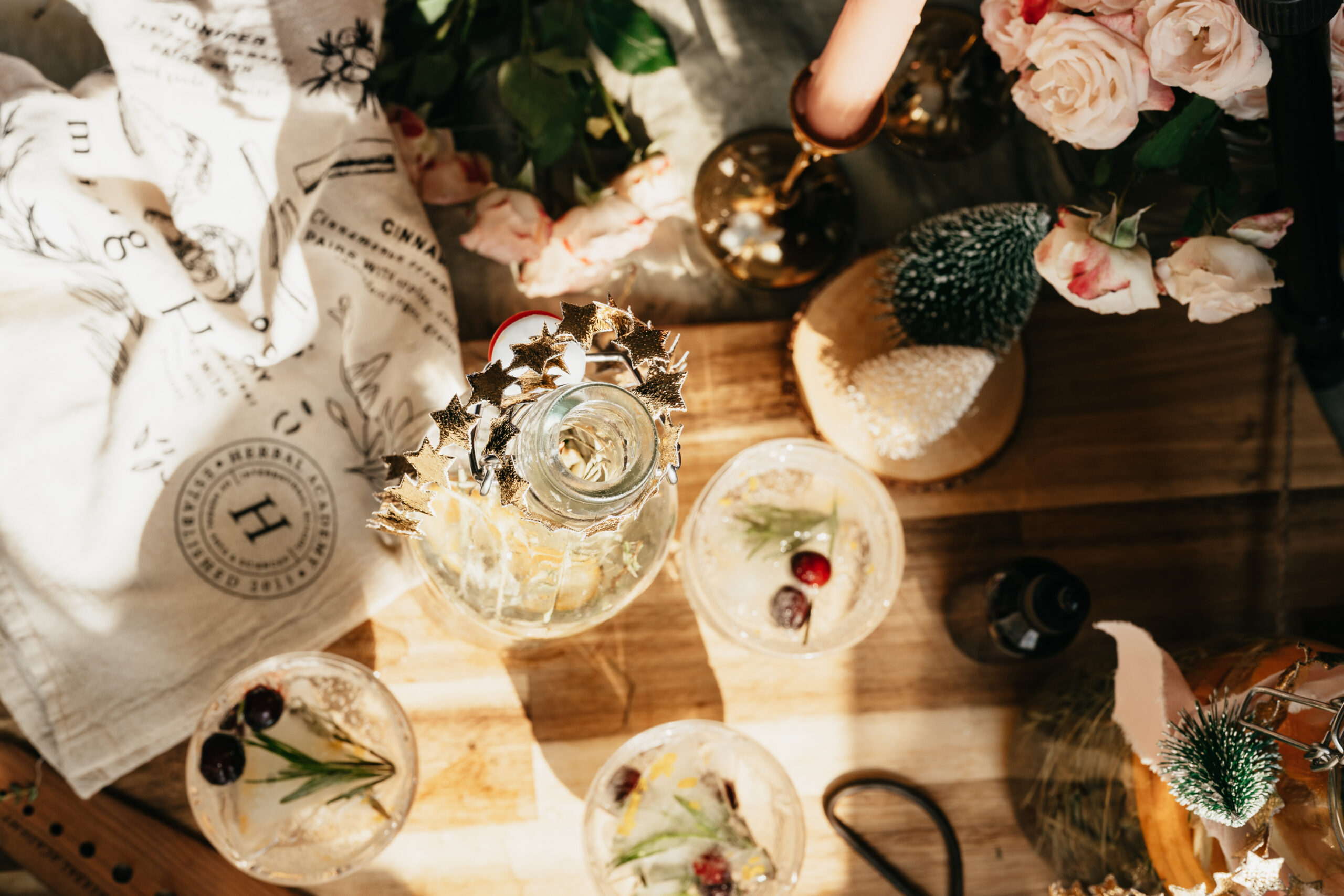
Double or halve these quantities if you want to make more or less. Yield: Makes 1 quart.
2 cups fresh pine (Pinus spp.) needles, whole and snipped into smaller pieces (measuring whole pine needles by volume can be tricky, so you can go for 2 big handfuls)Pine Needle Soda
8 tablespoons granulated sugar
3 slices ginger (Zingiber officinale) rhizome
One small organic citrus fruit, washed and sliced
6 sprigs rosemary (Salvia rosmarinus) or thyme (Thymus officinalis)
2 tablespoons whey protein, which acts as a starter (optional–this will help create carbonation but can be skipped)
4 cups filtered water
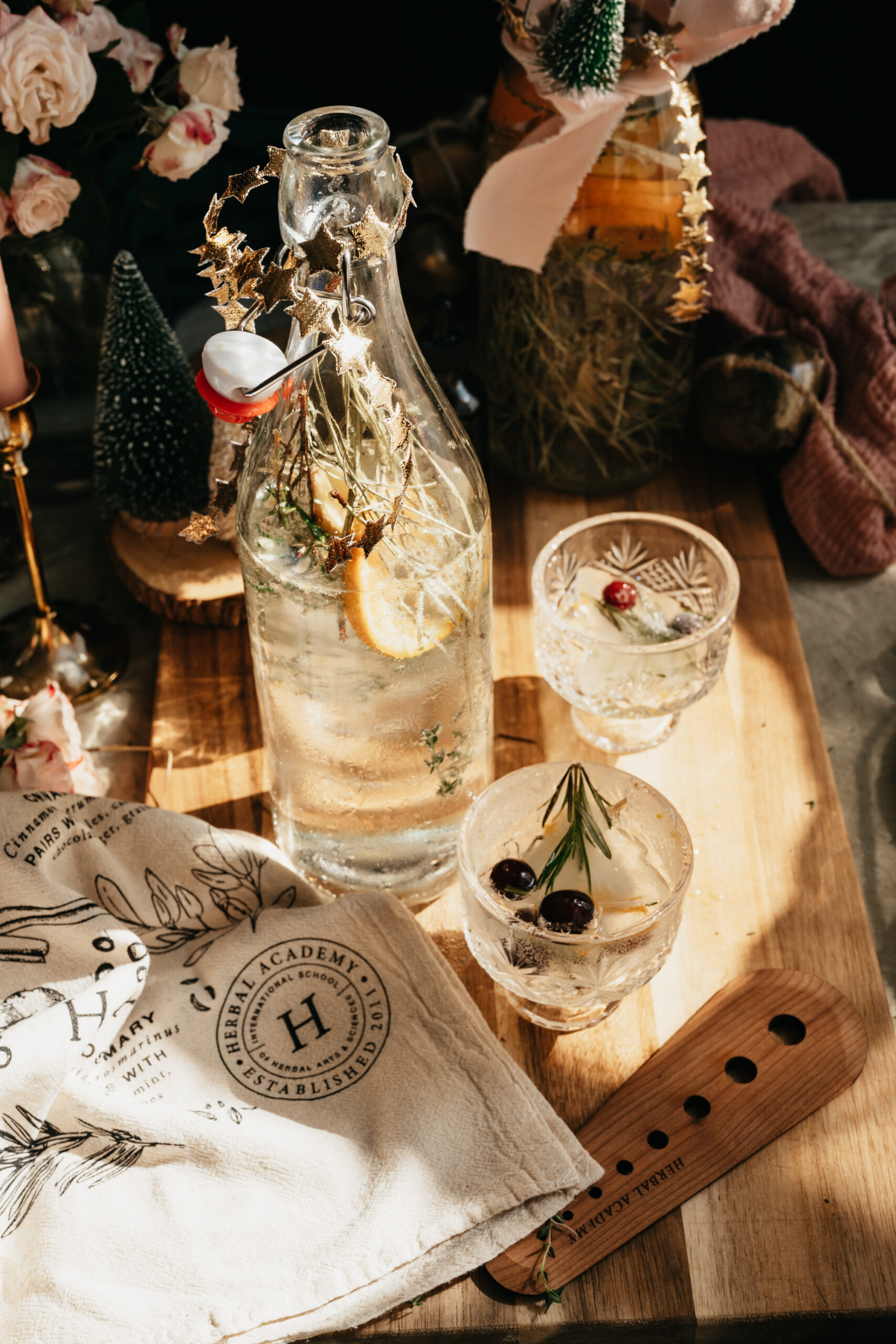
In Closing,
We hope this simple, accessible pine soda recipe kindles your curiosity for more seasonal fermentation adventures! If you’re looking for even more home-fermented sodas, make sure to check out our Nettle Infused Ice Cubes + How to Make a Super Soda.
And if you’re feeling herbal ferments calling your name, The Craft of Herbal Fermentation Course is the course for you. This positively fizzy program will give you all the information you need to confidently create your own ferments, including herbal beer, herbal mead, herbal kombucha, herbal water kefir, and herbal fermented foods, plus plenty of tips and tricks to make your fermenting enjoyable with delicious results. Whether you are a seasoned homebrewer, fermented foods enthusiast, or beginner—this course has something to offer everyone!
For more on herbal sodas, see:
How to Make a Cold-Infused Wild Soda
